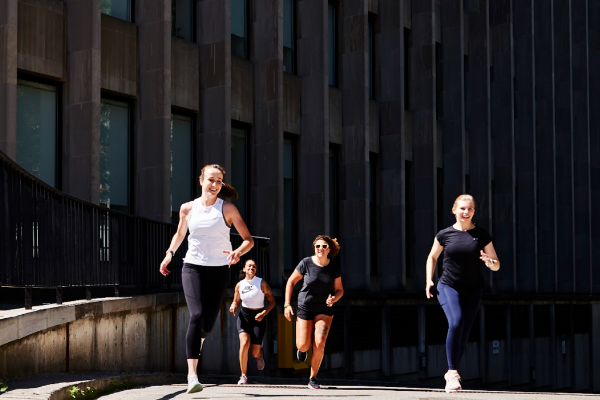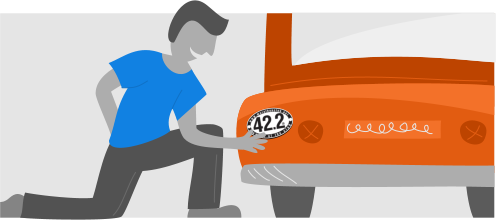In previous Runner’s Survival Guides, we’ve touched on how to train well and avoid injury, and how mental health and running come together.
At TRP, we are fortunate to get to meet hundreds of runners every year. With 2020 coming to an end, our team has spent a lot of time discussing and reflecting on how the pandemic has affected runners in the year of the pandemic, and further, how we can best respond as a team to help our patients and followers both in body and mind.
Here are the top three “patient stories” that we’ve heard this year. Can you relate?

#3: I turned to running because gyms have been closed.
This was a big one early in the pandemic. (Is it strange now that that there are early and late phases of pandemic discussion? SMH). With city initiatives like ActiveTO combined with some pretty stellar summer and fall weather, many previous gym-goers laced up and hit the asphalt as way to get their workouts in. Now in “second wave pandemic”, we’re seeing two groups of COVID Runners: Those who have really learned to love running and want to learn how they can improve, and those who went maybe a little too hard, ended up injured and now are wondering if they are doomed to never run.
Is this you?
If you’re in the former category of crushing your COVID runs, great! We’re here if you’d like to break down your routine or form and learn how to keep on getting better. If you’re in the latter category of the person who hit the ground running a little too hard and now you’re hurting, we can help you out with that too. The top injuries we’ve been treating are knee pain, shin splints, and plantar fasciitis. The good news? These problems do really well with prompt care, and you’re definitely not in the Never Run Again category.

#2: I’ve been running for mental health. (Aka, the world really sucks these days and running is a thing I can do that makes me feel better.)
To be fair, many people run for this reason in non-pandemic days, but definitely when the world is as challenging as it is, people have really been looking to reap the rewards of fresh air and movement.
Is this you?
Good for you. Exercise has been proven again and again to improve mood and decrease symptoms of anxiety and depression. Keep doing what feels good and don’t hesitate to reach out if we can help you.

#1: I’ve kind of been running and/or exercising but in general these days I’m just feeling so unmotivated.
Who can blame you? 2020 has been the year of no fun. No races, no social runs, no team hangouts, no team beers. Running can be enjoyable, but let’s face it, sometimes it’s a whole lot better when you’ve got some friends to do it with. Moreover, whether you’re a social runner or not, many of us need a Big Goal Race to be working towards as the thing that keeps you getting out day after day, if it’s raining, or after a long and busy day. So when life is stripped down to the bare bones, it’s easy to feel pretty meh.
Is this you?
If it is, don’t worry. It’s most of us. I surveyed our team at the clinic to see what kinds of conversations they’ve been having with patients to try and help reignite the exercise spark during these lo-mo times. Perhaps some of these will resonate with you.
- Create a new goal that’s offbeat from the norm. For example, how fast can you run 3k?
- Change up your routes to go somewhere totally different, even if it means driving to a new destination maybe on a weekend. If you typically run on the road, now is a great time to try out some local trails.
- Plan ahead of time. The more specific plan, the better. At the start of every week, think realistically about everything you have to do and where running/exercise might fit in. Try to keep your planning and schedules as consistent as possible. Exercising repeatedly and consistently in similar contexts will increase the likelihood that habits will form and become almost like a second nature.
- Make it social. Get others in your household to run with you. Use an app like Strava to virtually connect with other runners. Share your scheduled plans and goals with your running friends. Set group goals, competitions and challenges with coworkers, friends, or family members to work towards as a team. And share your individual progress with others!
- Remind yourself of why you run. Whether it’s for the physical and mental health benefits, because you enjoy it, or because it has become a piece of your identity, always remind yourself of the positive reasons why you run and hold on to the post-run glow feeling once you’ve finished.
The pandemic has definitely brought its fair share of curveballs. Try not to let these curveballs throw you off or get you down. When creating your exercise schedule, come up with a back-up plan on how you might handle interruptions for your original exercise plans, such as a different type of exercise like a YouTube video. If you miss a workout or if you’re just too tired/COVID fatigued to do it, that’s ok. We are all very used to living life at break-neck pace, and the pandemic has definitely put us all in a holding pattern. This is ok. You don’t always need to be “improving” – sometimes being in maintenance mode is what we all need more of. Cut yourself a break and choose activities that you enjoy. Remember – we’re all doing the best we can. And whether you’re looking for injury support, coaching tips, or performance tips, check out our online schedule and visit us either in-person or virtually.
Big thanks to our staff for their contribution to this blog, especially Ally Tabaczynski, our evening and weekend front desk admin who has completed research in motivational theory, understanding physical activity behaviours, and strategies to become active and overcome lapses in motivation. She is also currently writing a manuscript for a study her lab conducted looking at changes in physical activity during COVID-19 and its association with mental health. Our staff is the best.





